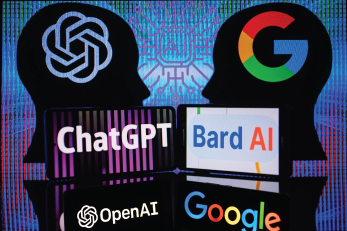The landscape of artificial intelligence is evolving at an unprecedented pace, and AutoGPT is leading the charge into a new era of autonomous AI agents. As a groundbreaking extension of ChatGPT, AutoGPT represents not just an upgrade but a transformative leap in how we interact with AI. This blog post will explore everything you need to know about AutoGPT—what it is, why it’s disruptive, how to use it, and what the future holds.
What Is AutoGPT (And Why It’s the Future of ChatGPT)
AutoGPT is an experimental open-source application built on top of OpenAI’s GPT-4. Unlike ChatGPT, which relies on user inputs for guidance, AutoGPT can operate autonomously. It can:
- Break down complex tasks into actionable steps.
- Generate its own prompts to accomplish objectives.
- Interact with APIs, files, and other software.
Essentially, AutoGPT evolves ChatGPT from a reactive assistant into a proactive agent capable of initiating and completing tasks without constant supervision.
Why AutoGPT Is So Disruptive (Don’t Believe the Hype)
AutoGPT’s ability to act independently has sparked both excitement and skepticism. Here’s why it’s so disruptive:
Advantages:
- Efficiency: Automates workflows that previously required multiple manual steps.
- Scalability: Handles tasks across various domains simultaneously.
- Adaptability: Learns and adjusts its approach dynamically.
Challenges:
- Overhyped Capabilities: While impressive, AutoGPT isn’t ready to completely replace human input.
- High Resource Consumption: Running AutoGPT can be computationally expensive.
- Error Propagation: Autonomy increases the risk of self-reinforcing mistakes.
The Promise of Autonomous AI Agents
Autonomous AI agents like AutoGPT have the potential to revolutionize:
- Business Processes: Automating lead generation, customer service, and data analysis.
- Creative Industries: Writing scripts, generating music, and designing graphics.
- Scientific Research: Simulating experiments, analyzing data, and drafting reports.
- Personal Productivity: Planning trips, managing schedules, and automating errands.
The possibilities are virtually endless, but realizing this potential will require overcoming current limitations.
Step-by-Step: How to Set Up AutoGPT on Your Device
Setting up AutoGPT requires a bit of technical know-how. Follow these steps to get started:
- Install Python: Ensure Python 3.7 or later is installed on your device.
- Clone the AutoGPT Repository: Use Git to clone the AutoGPT repository from GitHub.
- Install Dependencies: Run
pip install -r requirements.txtto install necessary libraries. - Set Up API Keys: Obtain an OpenAI API key and configure it in the
.envfile. - Run AutoGPT: Launch the application using the terminal command
python main.py. - Define Objectives: Input your desired goals, and let AutoGPT work autonomously.
How to Create and Communicate With Your Own AI Agent
Once AutoGPT is set up, you can create a personalized AI agent tailored to specific tasks. Here’s how:
- Define a Role: Specify the agent’s purpose (e.g., a research assistant, personal scheduler, or creative writer).
- Set Objectives: Outline the goals the agent should accomplish.
- Interact: Communicate with your agent using natural language inputs or pre-defined commands.
Using AutoGPT for Exciting Use Cases
Here are some of the most exciting applications of AutoGPT:
- Market Research: Gather and analyze competitive intelligence autonomously.
- Content Creation: Draft blogs, social media posts, and newsletters.
- Code Writing: Generate code snippets, debug issues, and create simple applications.
- Personal Finance: Track expenses, optimize budgets, and analyze investments.
Browser-Based Alternatives to AutoGPT
If setting up AutoGPT locally feels daunting, browser-based alternatives offer a simpler option:
- AgentGPT: A web-based interface for creating and managing autonomous AI agents.
- Hugging Face Spaces: Hosts AI tools that can simulate AutoGPT functionalities.
- Google Colab: Run AutoGPT in a cloud-based Python environment.
These platforms lower the entry barrier, making autonomous AI accessible to more users.
Current Limitations and Risks of Using AutoGPT
While AutoGPT is groundbreaking, it’s not without flaws. Key limitations include:
- Over-reliance on Context: AutoGPT can lose track of objectives in complex tasks.
- Cost: Running AutoGPT with GPT-4 can rack up significant API usage fees.
- Ethical Concerns: Autonomous agents may inadvertently generate harmful or biased outputs.
- Security Risks: Improper configurations could expose sensitive data.
Always approach AutoGPT with caution, testing outputs rigorously before deployment.
Provocative Predictions for the Future of AutoGPT
- Workforce Disruption: Autonomous agents will redefine job roles, emphasizing creativity and strategic thinking.
- AI Ecosystems: AutoGPT may serve as a foundational component for interconnected AI systems.
- Regulatory Oversight: Governments will likely implement regulations to mitigate risks.
- Enhanced Collaboration: Future iterations could enable seamless collaboration between human teams and AI agents.
Staying Updated on AutoGPT Developments
To keep pace with the latest innovations:
- Follow OpenAI Updates: Subscribe to their newsletters and blogs.
- Engage with Communities: Join Reddit threads, Discord groups, and GitHub discussions.
- Experiment with New Features: Regularly update your AutoGPT setup to access the latest tools.
- Participate in AI Conferences: Learn from industry experts and thought leaders.
AutoGPT is more than just a tool—it’s a glimpse into the future of AI. While challenges remain, the potential for transformative impact is undeniable. By understanding its capabilities, limitations, and applications, you can harness AutoGPT to stay ahead in the rapidly evolving AI landscape.


